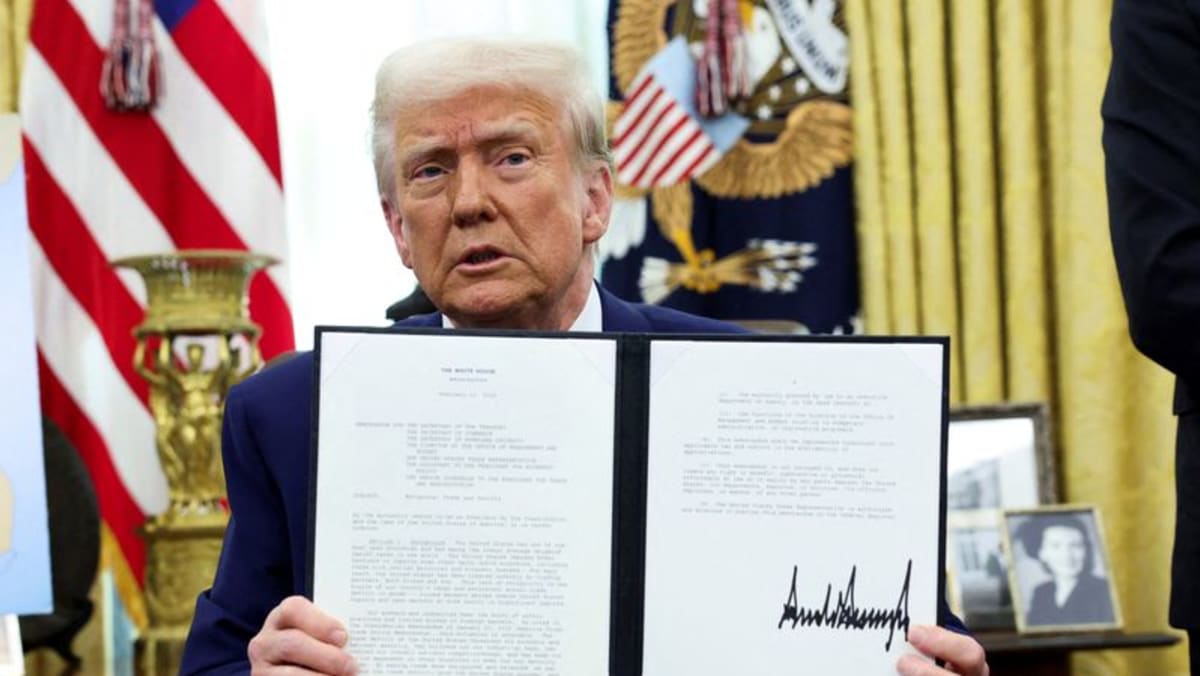Asia
Snap Insight: Trump’s reciprocal tariffs put Asia’s history of trade openness at risk

TheRisk andUncertainty of Trading with the US: A New Era ofUnilateral Trade Policy
The recent memo released by former President Donald Trump has introduced a significant shift in how the United States approaches international trade, creating unprecedented uncertainty for businesses and nations worldwide. The document outlines a sweeping new policy that bundles five distinct categories into a final "tariff" applied to goods entering the U.S. These categories include: the current level of tariffs applied to U.S. goods; unfair taxes, such as value-added taxes (VAT) and goods and services taxes (GST); costs imposed on U.S. businesses and consumers due to other countries’ policies, subsidies, and exchange rates; and any additional practices deemed unfair by the U.S. Trade Representative’s office. This approach is set to be detailed in a comprehensive report by April 1, with the potential for new reciprocal tariffs to be implemented as early as April 2. The implications of this policy are far-reaching and have left the global trade community scrambling to assess its consequences.
A Seismic Shift in Global Trade
The new U.S. trade policy represents a stark departure from the multilateral trading system that has been in place since the 1940s. This system, established in the aftermath of World War II, was designed to promote economic cooperation and stability among nations. The U.S., under Trump’s leadership, has now abandoned this framework in favor of a unilateral approach, where it unilaterally determines the terms of trade with its partners. This shift leaves the rest of the world with a daunting decision: either abandon decades of economic integration and risk isolation, or follow America’s lead and adopt similarly protectionist policies.
The introduction of "reciprocal tariffs" has added a layer of unpredictability to U.S. trade relations. Unlike traditional tariffs, which are typically predictable and based on clear criteria, reciprocal tariffs are applied on a case-by-case basis, leaving trading partners in the dark about the final tariff rate their products will face at the U.S. border. This uncertainty makes it nearly impossible for businesses to plan for the future, as they cannot anticipate the costs of exporting goods to the U.S. Some countries, sectors, or firms may emerge unscathed, while others may face debilitating tariffs despite their best efforts to negotiate favorable terms.
The Impact on Asia: A Region Built on Trade Engagement
For Asia, a region that has historically thrived on trade openness and economic integration, the new U.S. policy poses significant risks. Many Asian economies have built their growth strategies aroundexport-oriented industries, leveraging their comparative advantages in manufacturing and services to fuel domestic prosperity. The introduction of a "roulette wheel" of tariff applications could disrupt this delicate balance, creating chaos for businesses that rely on predictable trade conditions.
Asian nations, many of which have long championed free trade, are now faced with the challenge of navigating this uncertain landscape. The region’s economic growth, which has been a cornerstone of global prosperity, is potentially at risk. For example, industries that rely on exports to the U.S., such as electronics, textiles, and automotive parts, could be hit hard if tariffs are imposed. Additionally, the region’s highly integrated supply chains, which depend on smooth cross-border trade, may face disruptions as the new policy takes effect.
Navigating the Uncertainty: Challenges and Opportunities
While the new policy creates significant challenges, it also presents opportunities for countries to reassess their trade strategies and explore new partnerships. Deborah Elms, Head of Trade Policy at the Hinrich Foundation and Founder of the Asian Trade Centre, highlights the importance of proactive engagement and negotiation in this new era. Countries that can effectively navigate the complexities of the U.S. reciprocal tariff system may emerge stronger and more resilient.
However, the path forward is far from clear. The lack of transparency in how tariffs will be applied leaves businesses and governments in a state of limbo, unsure of how to prepare for the potential consequences. The only certainty is that the global trade landscape has changed irrevocably, and the world must adapt to this new reality. The coming months will be critical in determining how nations respond to the U.S. policy and whether they can find a way to mitigate its impact while maintaining the benefits of economic integration.
In conclusion, the new U.S. trade policy under Trump has ushered in an era of unparalleled uncertainty, with far-reaching implications for global trade. While the immediate consequences are difficult to predict, one thing is clear: the rules of the game have changed, and the world must navigate this risky new terrain with caution, creativity, and a commitment to finding solutions that balance national interests with global economic stability.











